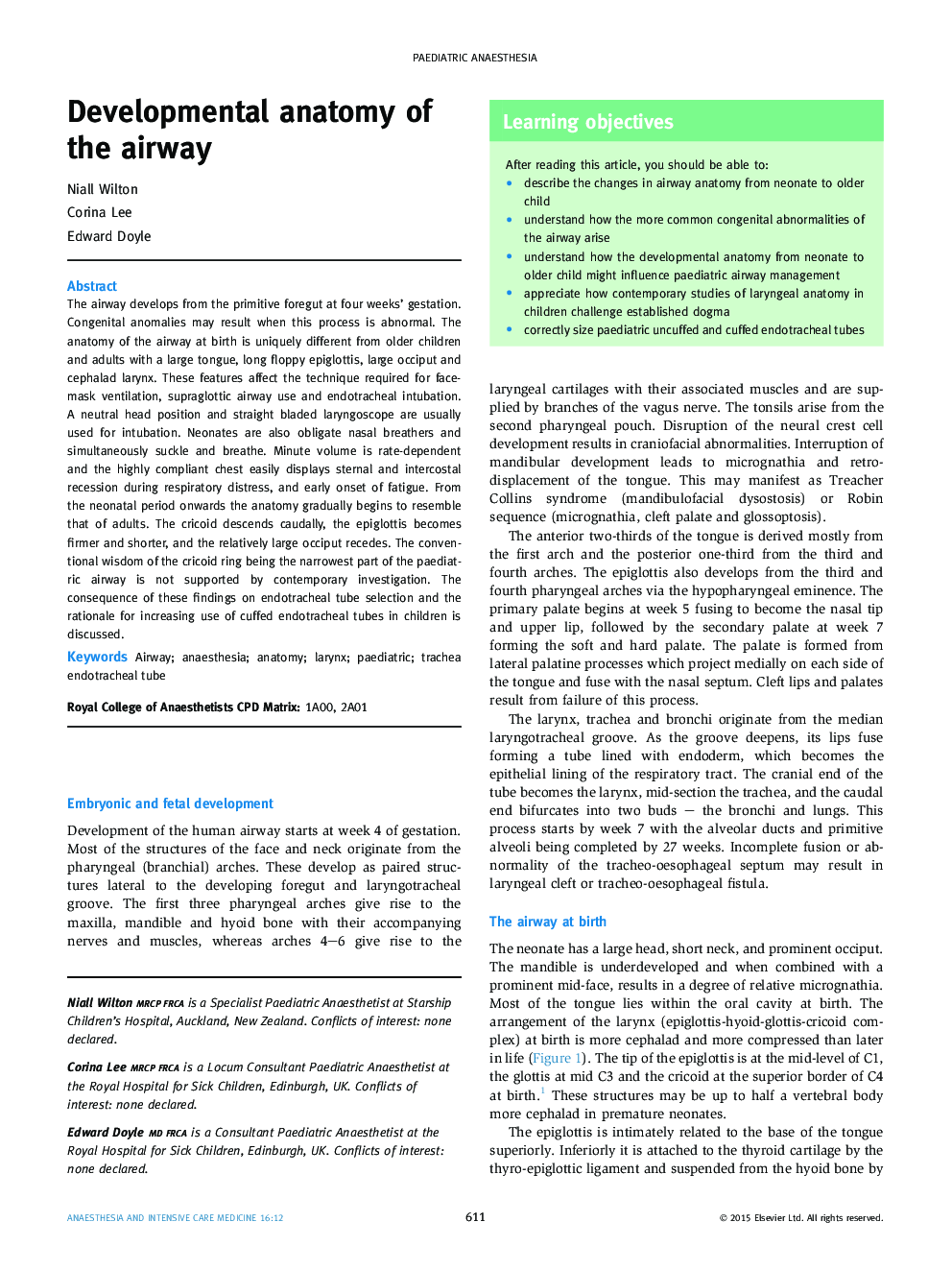| کد مقاله | کد نشریه | سال انتشار | مقاله انگلیسی | نسخه تمام متن |
|---|---|---|---|---|
| 2742057 | 1148579 | 2015 | 5 صفحه PDF | دانلود رایگان |
The airway develops from the primitive foregut at four weeks' gestation. Congenital anomalies may result when this process is abnormal. The anatomy of the airway at birth is uniquely different from older children and adults with a large tongue, long floppy epiglottis, large occiput and cephalad larynx. These features affect the technique required for facemask ventilation, supraglottic airway use and endotracheal intubation. A neutral head position and straight bladed laryngoscope are usually used for intubation. Neonates are also obligate nasal breathers and simultaneously suckle and breathe. Minute volume is rate-dependent and the highly compliant chest easily displays sternal and intercostal recession during respiratory distress, and early onset of fatigue. From the neonatal period onwards the anatomy gradually begins to resemble that of adults. The cricoid descends caudally, the epiglottis becomes firmer and shorter, and the relatively large occiput recedes. The conventional wisdom of the cricoid ring being the narrowest part of the paediatric airway is not supported by contemporary investigation. The consequence of these findings on endotracheal tube selection and the rationale for increasing use of cuffed endotracheal tubes in children is discussed.
Journal: Anaesthesia & Intensive Care Medicine - Volume 16, Issue 12, December 2015, Pages 611–615
